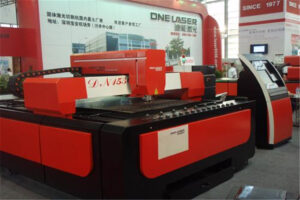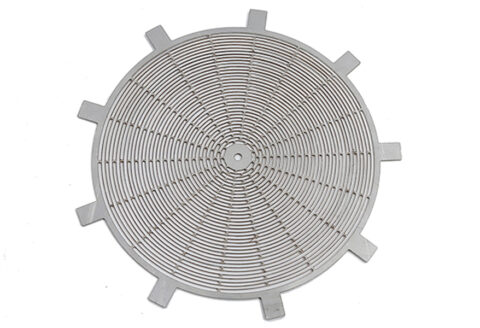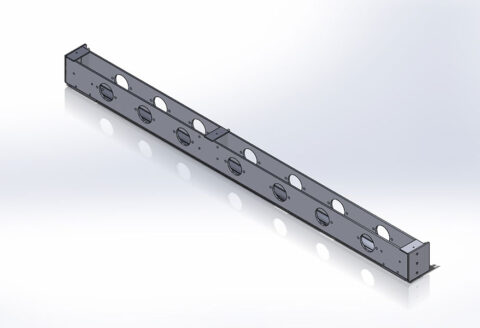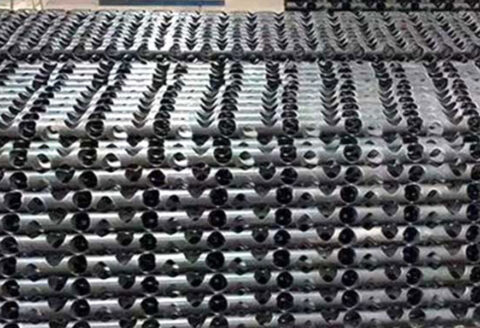In recent years, with the rapid development of science and technology and industrial economy, the demand for laser cutting pipe processing and welding structural parts has continued to increase, which has led to in-depth research on the weldability of laser cutting pipe processing. The wide application of aluminum alloy has promoted the development of aluminum alloy welding technology. At the same time, the development of laser welding technology has expanded the application areas of aluminum alloys. Therefore, aluminum alloy welding technology is becoming one of the research hotspots. To improve the welding process of aluminum alloy, one must be familiar with the material properties of aluminum alloy.
Physical and chemical properties of aluminum alloy
Aluminum alloy material has high reflectivity and high thermal conductivity. From the point of view of microscopic electronic structure, aluminum alloy has more free electrons, and the density is not high. When the laser acts on these electrons, it will produce strong vibrations and secondary electromagnetic waves, resulting in strong reflection waves and weak transmission waves. Therefore, the surface of the aluminum alloy has a strong reflectivity to the laser. While affecting its effect on the laser, the heat conduction of the aluminum alloy material will be improved due to the strong Brownian motion of electrons.
my country has conducted research on laser welding of aluminum alloy materials. The results also prove that the welding of aluminum alloy requires surface pretreatment, such as sandblasting, sandpaper treatment, surface chemical corrosion, surface plating, carbon black, oxidation, etc., which can reduce beam reflection and effectively improve the absorption rate of laser aluminum alloy workpieces, Welding structure design, manual drilling of aluminum alloy surface or combined use of condenser, V-shaped wave port or customized welding (splicing gap is equivalent to manual drilling) can increase the laser absorption of aluminum alloy and obtain greater penetration , Reasonable design of the welding gap can increase the absorption of laser energy on the aluminum alloy surface.

Influence of plasma and pinhole effect on laser welding of aluminum alloy
In the process of aluminum alloy laser welding, the appearance of small holes can greatly increase the laser absorption rate of the material, and the welding can obtain more energy. The aluminum element, magnesium, zinc, lithium and other elements in aluminum alloys have low boiling points, are easy to evaporate, and have high vapor pressures. Although this helps to form small holes, the cooling effect of the plasma (shielding and absorbed energy through the laser plasma reduces the “overheating” of the energy input of the base metal plasma itself, but it prevents the continuous existence of the keyhole, very It is easy to produce welding defects such as pores, which affect the welding forming and mechanical properties of the joint. Therefore, the sensitivity and stability of the small holes have become the key to ensuring the quality of laser welding.
Due to the high reflectivity and thermal conductivity of aluminum alloys, a higher laser energy density is required to induce the formation of small holes. The energy density threshold is basically controlled by the alloy composition. Therefore, a stable welding process can be obtained by controlling the process parameters, selecting the laser power and ensuring the appropriate heat input. In addition, the type of shielding gas also has a certain impact on the energy density threshold. For example, when using nitrogen gas for laser welding of aluminum alloys, small holes are likely to occur, while helium gas cannot. This is due to the exothermic reaction between N2 and Al to form an Al-n-o ternary compound, which improves laser absorption.
3. Porosity in aluminum alloy welding
There are many types of aluminum alloys, and the pores produced by them are also different, but they are usually different from the following types of pores.
1) The pores created by the protective gas. In the aluminum alloy high-energy laser welding process, due to the strong evaporation of the metal in front of the hole at the bottom of the molten pool, the shielding gas is sucked into the molten pool to form bubbles. When the bubbles do not escape in time and stay in the aluminum alloy solid, they become pores.
Small hole: A small hole created by the collapse of a small hole. In the laser welding process, when the surface tension is greater than the vapor pressure, the small hole will be unstable and collapse, forming a small hole before the metal is filled. There are also many practical measures to reduce or avoid pore defects in the laser welding of aluminum alloys, such as adjusting the laser power waveform, reducing unstable small hole collapse, changing the beam concentration and oblique irradiation, applying electromagnetic field effects in the vacuum welding process and welding, etc. . In recent years, filler wire or pre-solidified alloy powder, composite heat source and dual focus technology have appeared to reduce pores, and the effect is good.
3) Hydrogen pores. After the aluminum alloy is melted in a hydrogen environment, the hydrogen content can reach more than 0.69ml/100g. However, the hydrogen dissolving capacity of the alloy after solidification is only 0.036ml/100g, which is nearly 20 times different. Therefore, during the transition from liquid to solid, excess hydrogen in the liquid aluminum must be precipitated. If the precipitated hydrogen cannot float up and escape smoothly, it will accumulate into bubbles and stay in the aluminum alloy solid to become pores.
Aluminum alloy crack problem
Existing problems: Aluminum alloy is a typical eutectic alloy, and laser welding is more prone to thermal cracks due to rapid solidification. The formation of aluminum-silicon or magnesium-silicon eutectic at the columnar crystal boundary is the cause of cracks.
Solution: Filler wire or preset alloy powder can be used for laser welding. By adjusting the laser waveform and controlling the heat input, crystal cracks can also be reduced.
In short, before laser welding aluminum alloy, you should understand the chemical and physical properties of the material itself, combined with related technical essentials, to avoid the negative impact of welding on the workpiece material. Aluminum alloy welding technology is one of the key technologies to expand the application of aluminum alloy in the industrial field.


